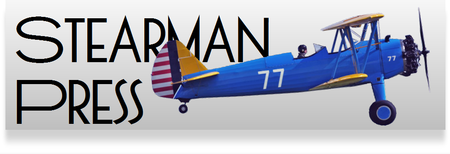Black and white film in a technicolor world.
Trying to envision a colorful scene as black and white can be very challenging, frustrating even.
Obviously, this isn't a new problem. In fact, Ansel Adams recommended carrying a Wratten #90 filter for pre-viewing the scene. Other similar solutions have been produced. Unfortunately, they're hard to find. And expensive, the last one we saw online was over $45.
One solution is to carry digital camera with the "picture mode" set to gray scale. Plus, you can mount a lens with the desired Field of View to help with framing. Since most of us already have a digital camera, the cost is almost zero. (Editors note: I've been shooting my Super Graphic with a 180mm; a 28mm on a micro 4/3s matches almost perfectly.)
While a digital camera works really well, it is awkward, especially when on the move. We wanted something cheap and simple. It didn't need to be perfect, just an easy to use tool to help with framing and envisioning the final print.
So we thought we'd make our own, after all, how hard could it be?
First, a little color theory. We don't have an ophthalmologist on our team but here's our understanding:
- The human eye sees only red, green and blue. (Not entirely true but close enough for this discussion.)
- Our eyes are the most sensitive to red and green (at least during the day.)
- It is the ratio of red:green:blue that our brain interprets as color.
- If the perceived levels of red/green/blue are equal, we see gray.
So if we could reduce the levels of red and green to match the blue level, our brain would think the scene was in black and white. Based on this theory, we started experimenting with our collection of Wratten filters.
We'll not bore you with the details of our exhaustive research (basically having everyone stare through filters at a Macbeth colorchecker.) In the end, we found that a Wratten #53 combined with a #80A worked the best. Here's a chart that helps explain why (data from The Transmission of Wratten Filters.)

As you can see, the #80A knocks out the red end and seriously reduces the greens. Combined with the #53, the green is reduced even further; red and blues eliminated.
Looking through the combination turns reds to dark gray; yellows blend in with whites; blues become grayish. It does give the scene a hint of green.
The next question: how does this compare to what the film sees? Here's the sensitivity curve for Fomapan 100:

Like most black and white films, the sensitivity drops off toward the red end. Generally speaking, our filter is similar to the film, though a little weak on the blue end.
We're still evaluating different filters and might find something more optimal. But the truth is that the real world is far more complicated. The biggest issue is that everyone "sees" everything differently. A filter tuned for one person's eyes won't be optimal for the next guy's.
Plus, everyone is printing on different paper with different chemistry and are envisioning a different result.
So while this combination isn't perfect, it's a pretty good compromise.
Hold on
Next, we needed to make a fancy frame for our special filter. Time for another picture:

The opening is in a 4:5 ratio. Holding it about 30mm from your eye (the tip of most noses) results in a Field of View of approximately 50 degrees; close to "normal". Hold it further away to simulate longer lenses.
We experimented with wider viewing ports but found that since you had to move your eye from side to side to get the full picture, it was very subjective. In the end, we decided it wasn't worth the trouble.
The curved shape lets you "cup" the card with your palm to block light from behind. It slips right into a shirt pocket, ready for the quick draw.
We call it the ZoneView. Here's the pdf file ZoneView DIY, if you want to make one for your own personal use. Print it "actual size" on an adhesive label, stick it to card stock, cut it out, add some filter material and go take pictures. You'll instantly become a better photographer.
Okay, we admit it's not perfect, but it is a useful tool. And like all tools, it takes a little practice to master.
If there's enough interest, we'll manufacture a batch and offer them in our store, all ready to go, filters included. Looks like we'd have to get about $6-10 to make the business case.
If you have comments or suggestions, send an email to product_dev@stearmanpress.com.
